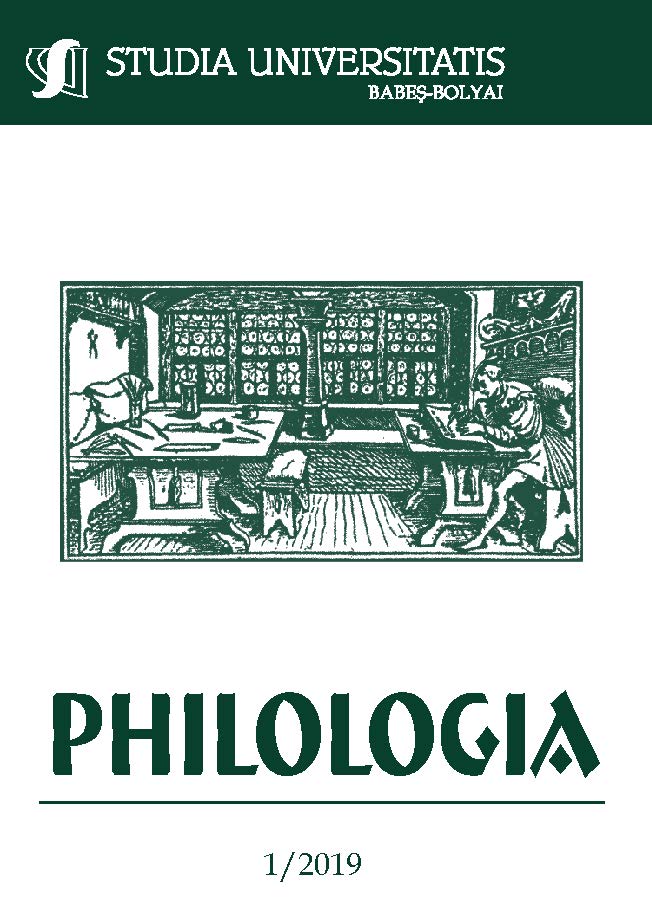DORA D’ISTRIA: MAPPING THE CULTURAL TRANSFER OF INTIMACY AT THE “FRINGES” OF EUROPE
DOI:
https://doi.org/10.24193/subbphilo.2019.1.17Keywords:
intimacy, Dora D’Istria, women’s emancipation, mid-nineteen century, modernity, discourse.Abstract
Dora D’istria: Mapping the Cultural Transfer of Intimacy at the “Fringes” of Europe. The present paper examines two texts by Dora D’Istria dealing with women’s emancipation and empowerment in the mid-nineteenth century. Thus, we shall analyze how women situated their experience against the discourses that regulated intimacy in the context of nation-building in that respective period.
REZUMAT. Dora D’Istria: O cartografie a transferului cultural al intimității la “marginile” Europei. Lucrarea de față analizează două texte ale Dorei D’Istria axate pe emanciparea și responsabilizarea feminină la mijlocul secolului al XIX-lea. Astfel, vom examina felul în care femeile și-au raportat experiența la retorica intimității, precum și modul în care aceasta din urmă era reglementată într-o epocă preocupată de construcția identității naționale.
Cuvinte cheie: intimitate, Dora D’Istria, emancipare femininã, mijlocul secolului al XIX-lea, modernitate, discurs.
References
***. “Ce scriitoare ar trebui să fie prezente în canonul şcolar şi în programa pentru bacalaureat?” (“What Women Writers Should be Present in the School Canon and in the Baccalaureate Curriculum?”). Observatorul Cultural online journal, no, 917, 2018, www.observatorcultural.ro/articol/ce-scriitoare-ar-trebui-sa-fie-prezente-canonul-scolar-si-programa-pentru-bacalaureat. Accessed 20th November 2018.
Bordaș, Liviu. “Angelo De Gubernatis, Dora D’Istria şi savanţii români în a doua jumătate a secolului XIX” [“Angelo De Gubernatis, Dora D’Istria and the Romanian Scientists in the Second Half of the 19th Century”]. Acta Mvsei Porolissensis, volume XXVII, 2005, pp. 695-710.
D’Alessandri, Antonio. Gândirea şi opera Dorei D’Istria între Orientul european şi Italia (Dora D’Istria’s Thought and Work Between the European Orient and Italy). Translated from Italian by Mara Chiţescu and Cerasela Barbone. Pavesiana Publishing House, 2011.
D’Istria, Dora. Des femmes par une femme. Librairie Internationale,1865.
---. Les femmes en Orient, 1859-1860. Meyer & Zeller Publishing House. Available in electronic format at www.ghyka.com. Accessed 1st December 2018.
---. Operile Doamnei D’Istria, Femeile in Oriinte [The Works of Dora D’Istria. Women in the Orient], 2nd volume. Translated by G. Peretz. Tipografia Curţii, 1876.
DeJean, Joan. Tender Geographies; Women and the Origins of the Novel in France. Columbia University Press, 1991.
Diaconoff, Suellen. Through the Reading Glass Women, Books, and Sex in the French Enlightenment. State University of New York Press, 2005.
Giddens, Anthony. The Transformation of Intimacy. Sexuality, Love and Eroticism in Modern Societies. Polity Press, 1992.
Harth, Erica. Cartesian Women; Versions and Subversions of Rational Discourse in the Old Regime. Cornell University Press, 1992
Landes, Joan B. Women and the Public Sphere in the Age of the French Revolution. Cornell University Press, 1988.
Miller, Nancy K. The Heroine’s Text: Readings in the French and English Novel, 1722-1782. Columbia University Press, 1980.
Năchescu, Voichița. “The Visible Woman Interwar Romanian Women’s Writing, Modernity and the Gendered Public/Private Divide.” Aspasia. The International Yearbook of Central, Eastern, and Southeastern European Women's and Gender History. Edited by Francesca de Haan. Volume 2, 2008, pp. 70-90.
Radway, Janice. Reading the Romance. Women, Patriarchy, and Popular Literature. The University of North Carolina Press, 1984.
Downloads
Published
How to Cite
Issue
Section
License
Copyright (c) 2019 Studia Universitatis Babeș-Bolyai Philologia

This work is licensed under a Creative Commons Attribution-NonCommercial-NoDerivatives 4.0 International License.



